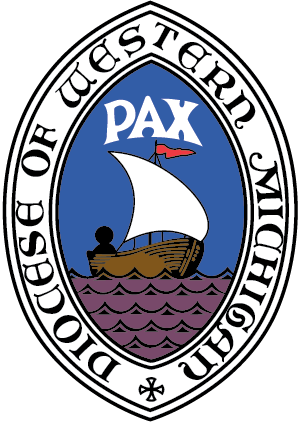Feast Days with Bishop Skip | St. Peter & St. Paul
Why is it that these two giants of the Christian faith are bundled on one feast day? Yes, they are remembered on other days in the Church’s calendar; Paul for his conversion and Peter for his confession. But, why this day?
Apparently, it is to remind us that they both died as martyrs in Rome. According to tradition, their deaths occurred in the same year, 64, during the persecution under Nero. They were united in death, united in faith, united in their common love of Jesus the Christ, united in their sense of mission to feed God’s sheep.
We also know, however, that in life they had occasion for great differences of theological opinion. In the letter of Paul to the Galatians in 2:11 we have these words, “But when Cephas (Aramaic for Peter) came to Antioch I (Paul) opposed him to his face, because he stood condemned.” This controversy was about the mission to the Gentiles and matters of the circumcised and uncircumcised. Adherence to the Law and differences in the interpretation of Scripture and its application played a huge part. This was no small matter and Paul was resolute. Unless we miss the significance, this matter threatened to tear apart the fledgling Church.
What won the day was Peter’s and Paul’s common faith in Christ. Their unity in the person of Jesus and his teaching transcending ideology and pointing to the great room of inclusion enabled them to eventually move to a new place. As a child growing up in the Episcopal Church, I was aware of a very tense time in my home parish when two lay leaders of the congregation were at enmity with one another. The sharing of the “peace of Christ” in the liturgy was brand new and for many a bit controversial. One Sunday one of these persons, at the peace, left his pew and walked around the rather large worship space. It became apparent he was going straight to the person with whom he had been having the great argument. Everyone was holding a collective breath.
The most astonishing thing then occurred. One held out his hand to the other in what seemed like slow motion, eyes met, the hand was gently pushed aside and an embrace was offered and received. In an instant a relationship was restored, healing happened and worship continued. In a follow-up parish newsletter article it was expressed by these two men that if they were going to claim Christ as Lord they needed to act like it. So they did, right before our eyes.
This was a formative moment for me as a young Christian as well as a transforming moment for that parish. Memory tells me that the sharing of the peace of Christ was never the same again. The subsequent reconciliation of Peter and Paul, on a much larger stage, was formative for the first century Church. My hope is that it continues to inform and transform who we are as the people of God today.
¿Por qué estos dos gigantes de la fe cristiana se agrupan en un día de fiesta? Sí, los recuerdan en otros días en el calendario de la Iglesia; Pablo por su conversión y Pedro por su confesión. Pero, ¿por qué este día?
Aparentemente es para recordarnos que ambos murieron como mártires en Roma. Según la tradición, sus muertes ocurrieron en el mismo año, 64, durante la persecución bajo Nerón. Estaban unidos en la muerte, unidos en la fe, unidos en su amor común por Jesucristo, unidos en su sentido de misión para alimentar a las ovejas de Dios.
Sin embargo, también sabemos que en la vida tuvieron ocasión de grandes diferencias de opinión teológica. En la carta de Pablo a los Gálatas en 2:11 tenemos estas palabras: “Pero cuando Cefas (Pedro en arameo) llegó a Antioquía, yo (Pablo) me opuse a él en su cara, porque estaba condenado”. Esta controversia era sobre la misión a los gentiles y los asuntos de los circuncisos e incircuncisos. La adhesión a la Ley y las diferencias en la interpretación de las Escrituras y su aplicación jugaron un gran papel. No era un asunto menor y Paul estaba decidido. A menos que pasemos por alto el significado, este asunto amenazó con destrozar a la incipiente Iglesia.
Lo que ganó fue la fe común de Pedro y Pablo en Cristo. Su unidad en la persona de Jesús y sus enseñanzas, que trascienden la ideología y apuntan a la gran sala de la inclusión, les permitió finalmente pasar a un nuevo lugar. Cuando era niño que crecía en la Iglesia Episcopal, era consciente que había un momento muy tenso en mi parroquia natal cuando dos líderes laicos de la congregación estaban enemistados unos con otros. Compartir la “paz de Cristo” en la liturgia era algo nuevo y para muchos un poco controvertido. Un domingo, una de estas personas, en el momento de la paz, abandonó su banco y se paseó por el espacio de culto, bastante amplio. Era evidente que se dirigía directamente a la persona con la que había tenido la gran discusión. Todo el mundo aguantaba un aliento colectivo.
Lo más asombroso ocurrió entonces. Uno le tendió la mano al otro en lo que pareció un movimiento lento, los ojos se encontraron, la mano se apartó suavemente y se ofreció y recibió un abrazo. En un instante se restableció una relación, se curó y la adoración continuó. En un artículo de seguimiento del boletín parroquial, estos dos hombres expresaron que si iban a reclamar a Cristo como Señor, debían actuar como tal. Así lo hicieron, justo ante nuestros ojos.
Este fue un momento formativo para mí como joven cristiano, así como un momento transformador para esa parroquia. La memoria me dice que compartir la paz de Cristo nunca volvió a ser igual. La reconciliación posterior de Pedro y Pablo, en un escenario mucho más amplio, fue formativa para la Iglesia del primer siglo. Espero que continúe informando y transformando quiénes somos hoy como pueblo de Dios.




